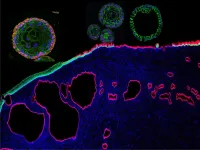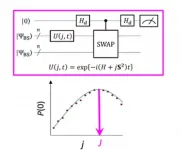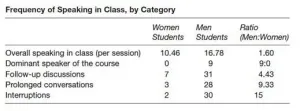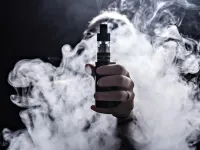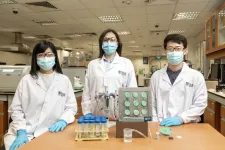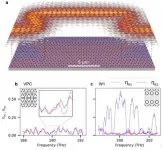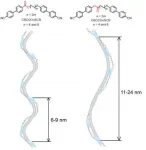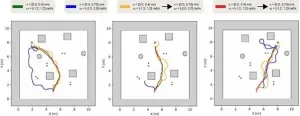(Press-News.org) Organoids are increasingly being used in biomedical research. These are organ-like structures created in the laboratory that are only a few millimetres in size. Organoids can be used to study life processes and the effect of drugs. Because they closely resemble real organs, they offer several advantages over other cell cultures.
Now there are also organoid models developed for the cervix. This part of the female body is particularly at risk to develop cancers. By creating novel organoid models, a group led by Cindrilla Chumduri (Würzburg), Rajendra Kumar Gurumurthy (Berlin) and Thomas F. Meyer (Kiel) have established a unique approach to studying the biology of the cervix and identify key turning points in cancer development.
In results published in the journal Nature Cell Biology, the researchers used the organoids to identify stem cells of the healthy cervix and the changes that arise during metaplasia, an early stage of carcinogenesis.
How precancerous cells develop
The cervix consists of two regions covered by different types of epithelial cells: multilayered squamous and single-layered columnar epithelia that merge at transition zones. These transition zones are hot spots for infection-induced cancer development.
However, an important precancerous condition at these sites is the occurrence of metaplasia, a process whereby the non-resident epithelium replaces the resident epithelium. The researchers have now revealed the origin of these metaplastic cells and how they are regulated.
For the first time, the researchers have created a complete cellular atlas of the uterine cervix. They discovered that the stratified and columnar epithelia at the cervical transition zone arise from two distinct stem cells. The regeneration of these two epithelial lineages and their homeostasis at the transition zone are controlled by opposing Wnt signals from the underlying stromal compartments.
The researchers also showed how quiescent stem cells are activated, that eventually develop into squamous metaplasia replacing resident columnar epithelium. Among other things, they showed that adenocarcinomas and squamous cell carcinomas arise from different stem cell lineages.
This pioneering and comprehensive finding in this study provides critical insights into the cervix biology and the transition points between the healthy and early event of carcinogenesis.
Research on cancer-causing viruses and bacteria
"These fundamental findings form a basis for further understanding of the mechanisms involved in carcinogenesis at these metaplastic sites. To study how human papillomavirus (HPV), together with superseding bacterial infections, plays a key role in transforming cells to malignancy. Additionally, these critical insights can help to develop diagnostics for the early detection of these two tumor forms and new therapeutic strategies," says Dr Cindrilla Chumduri.
The scientist has been leading a research group at Julius-Maximilians-Universität (JMU) Würzburg since 2019, based at the Biocentre, Chair of Microbiology. Prior to that, she conducted research in Berlin for eight years, first at Max Planck Institute for Infection Biology, then at Charité Universitätsmedizin.
At JMU, the researcher has found an excellent environment for her work. Her research focuses on understanding the interaction of pathogenic microbes and the host tissue at different stages of cancer development. At JMU, Dr Chumduri continues to use organoid models to decipher mechanisms of carcinogenesis induced by pathogens.
INFORMATION:
WHAT:
Healthcare providers must be able to explain the latest data supporting the safety and efficacy of vaccines for coronavirus disease 2019 (COVID-19) so they can strongly encourage vaccination when appropriate while acknowledging that uncertainty and unknowns remain. This message comes from a new commentary co-authored by Anthony S. Fauci, M.D., director of the National Institute of Allergy and Infectious Diseases (NIAID), part of the National Institutes of Health, and other leading NIAID scientists in the journal Annals of Internal Medicine.
The commentary provides an overview of the seven COVID-19 vaccines furthest along in development in the United States. For each vaccine candidate, the authors describe ...
Understanding how the natural world works enables us to mimic it for the benefit of humankind. Think of how much we rely on batteries. At the core is understanding molecular structures and the behavior of electrons within them. Calculating the energy differences between a molecule's electronic ground and excited spin states helps us understand how to better use that molecule in a variety of chemical, biomedical and industrial applications. We have made much progress in molecules with closed-shell systems, in which electrons are paired up and stable. Open-shell systems, on the ...
Men speak 1.6 times more often than women in college classrooms, revealing how gender inequities regarding classroom participation still exist, according to a Dartmouth study. By comparison, women are more hesitant to speak and are more apt to use apologetic language. The findings are published in Gender & Society.
When students didn't have to raise their hands to participate in class, men spoke three times more often than women. "You would think that it would be more equitable for students to not have to raise their hands to speak in class because then anyone could talk ...
RICHLAND, Wash.--E-cigarettes stress and inflame the lungs of rats, compromising important regulatory proteins through exposure, according to research recently published in the journal Redox Biology. The findings, made possible by a biomolecular technique developed by researchers at the U.S. Department of Energy's Pacific Northwest National Laboratory, reveal that vaping induces subtle structural changes in proteins, marking the first time researchers have measured such damage. The results suggest that common compounds in the electronic alternative to conventional cigarettes are not without their own harms.
After exposing rats to e-cigarette vapor for three one-hour sessions ...
Some say future wars will be fought over water, and a billion people around the world are already struggling to find enough water to live.
Now, researchers at the National University of Singapore (NUS) are coming to the rescue. They have created a substance that extracts water from air without any external power source.
In the earth's atmosphere, there is water that can fill almost half a trillion Olympic swimming pools. But it has long been overlooked as a source for potable water.
To extract water from this under utilised source, a team led by Professor Ho Ghim Wei from the NUS Department of Electrical and Computer Engineering created a type of aerogel, a solid material that weighs almost nothing. Under the microscope, it looks like a sponge, but it ...
University of South Australia scientists have developed the world's first test to accurately predict mood disorders in people, based on the levels of a specific protein found in the brain.
Links between low levels of mature brain-derived neurotrophic factor (mBDNF) and depression are well known but, until now, it hasn't been possible to distinguish between the three forms of the BDNF protein in blood samples.
The mature form promotes the growth of neurons and protects the brain, but the other two BDNF forms - its precursor and the prodomain of BDNF - bind to different receptors, causing nerve degeneration ...
SINGAPORE, 19 January 2021 - Duke-NUS Medical School researchers, together with collaborators in Singapore, have designed armoured immune cells that can attack recurring cancer in liver transplant patients, while temporarily evading immunosuppressant drugs patients take to avoid organ rejection. The findings were published in the journal Hepatology.
Hepatocellular carcinoma is the most common type of primary liver cancer and the sixth most common cancer worldwide. It often develops in people with chronic liver disease following hepatitis B infection.
A common treatment for hepatocellular carcinoma is to completely ...
Topologically tailored photonic crystals (PhC) have opened up the possibility for attaining robust unidirectional transport of classical and quantum systems. The demand for unprecedented guiding capabilities that support unhindered transport around imperfections and sharp corners at telecom wavelengths, without the need for any optimization, is fundamental for efficient distribution of information through dense on-chip photonic networks. However, transport properties of experimental realizations of such topologically non-trivial states have been inferred by transmission measurements and even though robustness ...
Overview:
A team of researchers led by Assistant Professor Yuki Arakawa (Toyohashi University of Technology, Japan) has successfully developed sulfur-containing liquid crystal (LC) dimer molecules1) with oppositely directed ester bonds, which exhibit a helical liquid crystal phase, viz. twist-bend nematic (NTB) phase, 2) over a wide temperature range, including room temperature. Collaboration with a team at the Advanced Light Source research facility (Lawrence Berkeley National Laboratory, USA) revealed that the ester bond direction in the molecular structures largely impacts the pitch lengths of helical nanostructures in the NTB phase. It is expected that this molecular design ...
Overview:
A research group from the Active Intelligent System Laboratory (AISL) at Toyohashi University of Technology (TUT) has proposed a new framework for training mobile robots to quickly navigate while maintaining low collision rates. The framework combines deep reinforcement learning (DRL) and curriculum learning in the training process for robots to learn a fast but safe navigation policy.
Details:
One of the basic requirements of autonomous mobile robots is their navigation capability. The robot must be able to navigate from its current position to the specified target position ...
